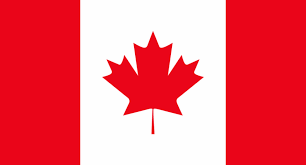Chemycal has been acquired by 3E
Learn MoreChemycal has been acquired by 3E
Learn MoreDiscover how Chemycal PRO helps you boosting your regulatory monitoring:

Federal Environmental Quality Guidelines (FEQGs) are recommended chemical thresholds to support federal initiatives. FEQGs set a concentration so that if a given chemical is at or below the FEQG threshold, there is low likelihood of direct adverse effects from the chemical on aquatic life exposed via the water or sediment, or where chemicals may bioaccumulate, in wildlife (birds and mammals) that consume aquatic life.
FEQGs for soil and groundwater are chemical remediation values used to assess and help manage in-place contaminants at contaminated sites. FEQGs do not generally address cumulative exposures or additive effects with other chemicals. As a result, more stringent targets may be useful for certain substances, for example in the risk management phase. FEQGs are based on the toxicological effects, that is, the hazard of specific chemical substances or groups of substances.
The use of FEQGs is voluntary unless prescribed by regulation or binding agreements. Though they may be applied as intermediate values in calculations, FEQGs are neither effluent limits, nor are they "never-to-be-exceeded" values.
Why are FEQGs developed?
The requirement to develop environmental quality guidelines comes from legislation, specifically section 54 of the Canadian Environmental Protection Act, 1999, (CEPA 1999). The Act states that for the purpose of preserving the quality of the environment, the Minister of the Environment and Climate Change shall issue "environmental quality guidelines specifying recommendations in quantitative or qualitative terms to support and maintain particular uses of the environment".
Are there substances for which FEQGs are currently under development?
(*) Perfluorooctanoic acid
(*) Naphthenic acids
(*) Rare earth elements
(*) Triclocarban
(*) BTEX (benzene, toluene, ethylbenzene, xylene)
This listing is provided for information purposes only and is not an official set of commitments. It is not exhaustive and does not necessarily include all individual final FEQGs. In the case of a discrepancy between this listing and the official FEQGs released, the official FEQGs prevail.
CONTINUE READING ON: www.canada.ca
2013 © MyChemicalMonitoring. ALL Rights Reserved. About Us | Terms and Conditions